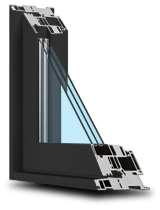Tilt & Turn vs. Casement Windows: What's the Better Choice for Ventilation?
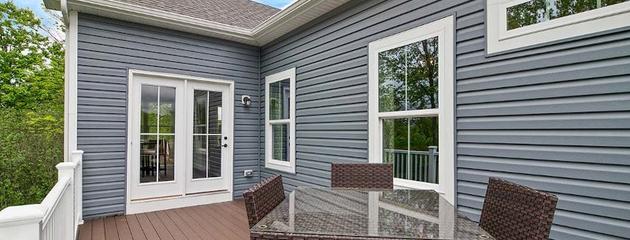
Key Takeaways
- Tilt-and-turn windows offer dual functionality: inward tilting for ventilation and full inward swing for cleaning and emergency egress.
- Casement windows operate on side hinges and swing outward like a door, offering excellent ventilation and energy efficiency.
- Tilt-and-turn windows are ideal for controlling seasonal airflow, while casement windows provide broader, immediate ventilation.
- Material choices, such as uPVC, aluminum, and wood, affect durability and insulation performance.
- Experts suggest choosing based on specific room needs, safety considerations, and energy-saving goals.
What are tilt and turn windows, and how do they function?
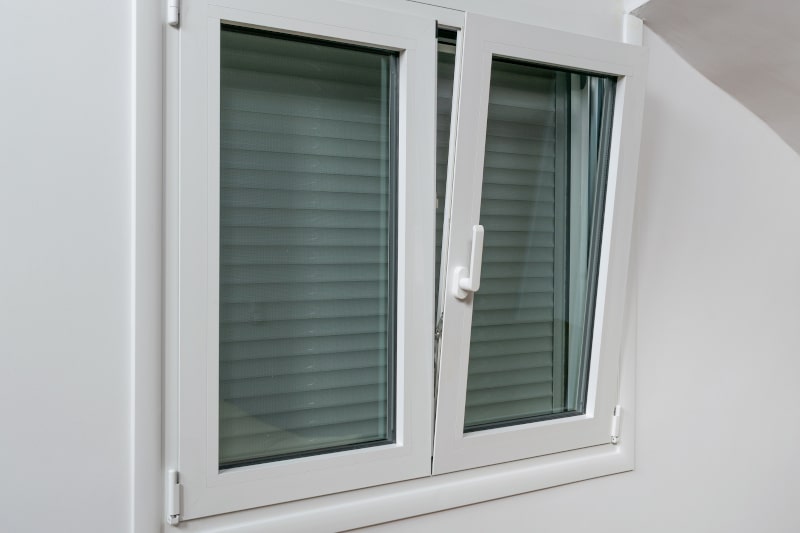
Tilt-and-turn windows feature a dual-function design: a top-tilt mode for ventilation and a full inward swing for cleaning and emergency egress. That’s the beauty of a tilt and turn window . It’s not just a design trend; it’s a highly functional architectural feature increasingly popular in modern homes across Canada.
The Mechanics Behind Tilt and Turn
Tilt-and-turn windows operate using a dual-axis system, supported by multi-point locking hardware. Here's how it works:
- Tilt Mode : Turn the handle 90 degrees, and the window tilts inward at the top. This allows for safe ventilation without fully opening the window.
- Turn Mode : Turn the handle 180 degrees, and the window swings inward horizontally like a door. This mode is ideal for cleaning and quick egress.
The internal gearing mechanism routes the handle’s movement through a set of cams and rods embedded in the frame, synchronizing tilt and turn actions seamlessly.
Common Materials
Tilt and turn windows are typically available in:
- uPVC: Offers sound insulation and low maintenance.
- Aluminum: Lightweight, durable, and modern-looking but can be less insulating without a thermal break.
- Wood: Excellent natural insulator, though requires more upkeep.
Many manufacturers offer hybrid options — for example, aluminum-clad wood frames — to blend insulation and weather resistance.
Usability and Benefits
- Security: Multi-point locks offer enhanced safety.
- Energy Efficiency: Air-tight seals reduce energy loss.
- Maintenance: Interior access makes cleaning easy.
- Aesthetics: Minimalist and suitable for large glazing areas.
“Tilt-and-turn windows offer homeowners a rare combination of flexible ventilation, strong energy performance, and built-in safety — ideal for modern living,” — Helen Sin, Consumer Success Manager at Canadian Choice Windows & Doors™
Specification Table: Tilt and Turn Windows
| Feature | Description |
|---|---|
| Operation Modes | Tilt (inward top) / Turn (inward side-hinged) |
| Locking Mechanism | Multi-point locking |
| Cleaning Access | Full interior access |
| Common Materials | uPVC, aluminum, wood |
| Ideal Room Placement | Bedrooms, kitchens, high-rise applications |
How do casement windows operate compared to tilt and turn models?
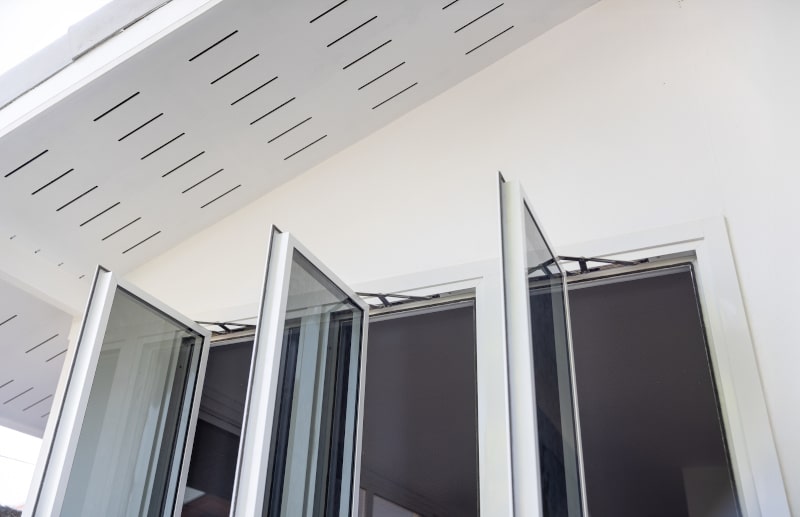
Casement windows operate on a time-tested side-hinged system that remains a reliable choice for both traditional and contemporary homes. Their straightforward mechanism delivers excellent performance, combining wide ventilation openings with strong sealing properties. With minimal moving parts and user-friendly crank operation, casement windows continue to meet the needs of Canadian homeowners looking for durability, ease of use, and energy efficiency.
Side-Hinged Operation
Casement windows are attached to the frame by one or more side hinges, allowing them to swing outward like a door — typically operated using a crank handle. Most models open fully up to 90 degrees, providing an unobstructed outdoor view and maximized airflow.
Locking Systems
Casement windows often feature:
- Single or multi-point locks for better sealing
- Crank-out mechanisms that prevent accidental opening
- Weatherstripping for tight closure, which contributes to energy efficiency
These windows can also include optional hardware, such as friction hinges, to hold the sash in place when partially open.
Practical Differences
- Space Consideration: Casements need outdoor clearance.
- Cleaning: More difficult from inside, especially on upper floors.
- Cost: Usually more affordable than tilt and turn models.
- Customization: Available in a range of traditional styles.
“Casement windows perform reliably in all seasons. However, tilt-and-turn options offer superior indoor access and airflow control, especially in multi-storey homes,” — Tony Wong, Project Manager at Canadian Choice Windows & Doors™
Casement Windows
| Feature | Description |
|---|---|
| Operation Mode | Side-hinged, outward opening |
| Locking Mechanism | Crank-operated, single or multi-point locking |
| Cleaning Access | Limited on upper floors |
| Common Materials | uPVC, wood, aluminum |
| Ideal Room Placement | Living rooms, basements, ground-floor bedrooms |
Which window style offers better ventilation: tilt-and-turn or casement?
When choosing between window types , ventilation versatility becomes a top priority. Both casement and tilt-and-turn windows offer distinct airflow benefits, but the way they control it is very different.
Airflow Control: Precision vs. Power
- Tilt and Turn : Offers precision ventilation with the tilt mode — perfect for gentle airflow and overnight use. You can crack the window without security risks or letting in too much cold air.
- Casement : Delivers maximum airflow since it opens fully outward, allowing breezes to catch it directly, much like a sail.
Seasonal Flexibility
- Winter Use : Tilt mode on tilt-and-turn windows allows for safe cold-weather airing without a significant temperature drop inside.
- Summer : Casement windows shine here, offering full airflow and cross-ventilation.
Ventilation Comparison Table
| Feature | Tilt and Turn | Casement |
|---|---|---|
| Ventilation Type | Adjustable, indirect | Full, directional |
| Wind Resistance | High (due to partial opening) | Moderate (open to wind pressure) |
| Ideal Use (Season) | Winter and shoulder seasons | Summer and warmer climates |
| Security During Venting | Excellent (multi-point tilt lock) | Moderate (open sash vulnerable) |
What are the main pros and cons of tilt and turn windows?
When investing in new windows, functionality isn't the only concern — cost, convenience, and performance are also important factors. Tilt-and-turn windows may seem like a premium choice, but they come with a distinct set of trade-offs.
Benefits of Tilt and Turn Windows
- Dual-Functionality: You get two opening options in one window — tilt for ventilation and turn for full access.
- Easy Maintenance: Fully inward-opening panels make them exceptionally easy to clean from the inside.
- Enhanced Security: Multi-point locking system provides strong resistance against break-ins.
- Energy Efficiency: Tight seals and superior engineering help maintain consistent indoor temperatures.
- Ideal for Upper Floors: No need to lean out or hire external window cleaners.
Downsides of Tilt and Turn Windows
- Higher Initial Cost: Due to the complex mechanism and high-quality build.
- Operational Learning Curve: Some users find the handle operations unintuitive at first.
- Bulkier Frames: The robust hardware may slightly reduce the visible glass area.
- Specialized Repairs: Hardware failures require the expertise of trained technicians.
Pros and Cons Table
| Pros | Cons |
|---|---|
| Multi-function opening | More expensive than standard models |
| Easy interior cleaning | Learning curve for operation |
| Improved energy performance | Complex hardware, costlier to repair |
| High security locking | Bulky frames in smaller windows |
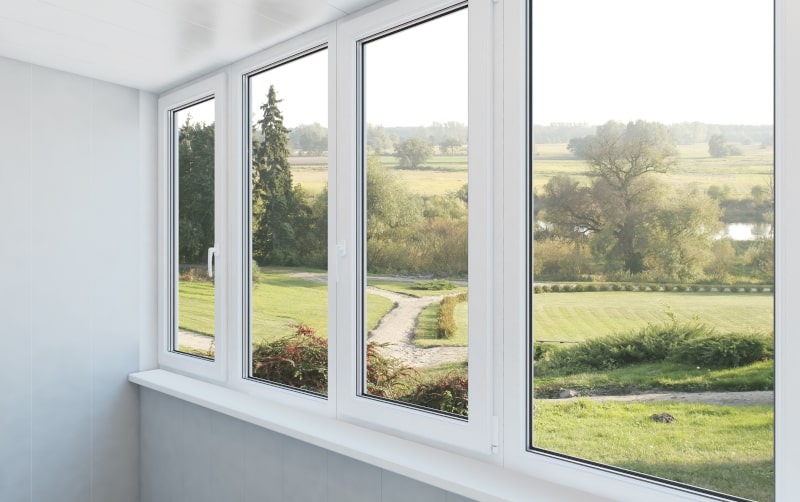
What are the advantages and disadvantages of casement windows?
Casement windows are among the most familiar and widely installed styles across Canada. But that doesn’t mean they’re one-size-fits-all. Understanding their strengths and limits helps match them to the right space and needs.
Advantages of Casement Windows
- Wide Opening Angle: Offers unobstructed views and maximum ventilation.
- Energy Efficient: Strong seals when closed help reduce heating and cooling costs.
- Simple Operation: Easy crank-handle use, even for elderly or limited mobility users.
- Compatibility: Available in various frame materials and sizes to suit most architectural styles.
Disadvantages of Casement Windows
- Exposure to Wind Damage: Hinges and hardware wear out faster in storm-prone regions.
- Difficult Cleaning: Upper floors require the use of ladders or special equipment.
- Obstructed External Walkways: Open sashes can block patios or paths.
- Limitations in Multi-unit Buildings: Often not allowed for safety or uniformity.
Pros and Cons Table
| Pros | Cons |
|---|---|
| Full ventilation with the wide open | Exposed hinges are vulnerable to the weather |
| Strong energy efficiency | Difficult to clean from the outside |
| Easy to operate | May obstruct walkways when open |
| Traditional and modern appeal | Not ideal for tight exterior spaces |
How do both window types perform in the local climate?
Canadian winters aren’t just cold — they’re brutal. So energy performance isn’t optional; it’s essential. Whether it’s blowing snow in Winnipeg or a coastal chill in Halifax, your window choice must withstand the elements.
Energy Ratings & Insulation
Tilt-and-turn windows often come with triple glazing and thermal breaks, giving them an edge in high-performance insulation. Their air-tight seals make them more resistant to drafts.
Casement windows also perform well when closed, but their performance depends heavily on the quality of their compression seals and the longevity of their hardware.
According to Natural Resources Canada’s ENERGY STAR® ratings , both window types can qualify — but only if built to modern standards.
Are tilt and turn windows more secure than casement windows?
Each window design offers distinct benefits, depending on its construction and intended use. Both tilt-and-turn and casement windows offer solid protection, but they utilize different locking mechanisms and security features to achieve this.
Locking Mechanisms
- Tilt and Turn : Equipped with multi-point locking systems that secure the window at several locations around the sash. In tilt mode, the window is still locked at key points, preventing tampering.
- Casement : Generally features single or dual-point locks, especially in standard crank models. Some premium models add multi-point locks, but it's less common.
Child Safety and Controlled Opening
- Tilt and Turn : Allows for partial ventilation via tilt without opening the entire sash — ideal for homes with children or pets.
- Casement : Requires the window to swing open for airflow, which could pose a fall risk in higher stories if safety latches aren’t installed.
Burglary Resistance
Tilt and turn windows tend to be more secure by design:
- Reinforced steel cores and internal hinges make forced entry more difficult.
- Multi-locking around the frame means fewer vulnerable points.
Casement windows, while secure, can be more easily pried open if they use single-point locking and non-reinforced frames.

Security Comparison Table
| Feature | Tilt and Turn | Casement |
|---|---|---|
| Locking System | Multi-point locking (standard) | Single/multi-point (varies) |
| Child Safety | Excellent (ventilation in tilt mode) | Moderate (requires full opening) |
| Break-in Resistance | High (multiple locking points) | Moderate (hinges can be vulnerable) |
| Visibility from Outside | Low (internal hardware) | Moderate (visible external crank) |
Which design is easier to clean and maintain over time?
Window aesthetics matter — but only if you can keep them clean. Tilt-and-turn windows are engineered for interior access, whereas casements may require ladders or exterior access for thorough maintenance.
Cleaning Access
- Tilt and Turn : The turn function allows the window to swing inward, providing full access to both sides from indoors.
- Casement : Opens outward, making it challenging to clean the exterior pane (especially on second stories) without special tools.
Parts Durability
- Tilt and Turn : Use heavy-duty internal mechanisms that last long if properly maintained. However, the complexity means wear can lead to expensive repairs.
- Casement : Simpler hardware that’s easier (and cheaper) to replace but may corrode faster if exposed to weather.
Water Drainage
- Tilt and Turn : Designed with multi-chambered frames and drainage channels, which are effective but must be kept clear.
- Casement : Drainage depends on the slope and outer seals, which may wear faster.
Maintenance Tips (Step-by-Step)
- Inspect Gaskets Annually: Look for cracks or compression in rubber seals.
- Lubricate Moving Parts: Use a non-silicone lubricant on hinges and locks once or twice a year.
- Clear Drainage Holes: Use compressed air or a pipe cleaner.
- Tighten Loose Screws: Regularly check the handle screws and hinge bolts.
- Clean Glass and Frame: Use non-abrasive soap and a soft cloth.
How do tilt and turn vs. casement windows affect energy efficiency?
Your windows are one of the most significant contributors to home heat loss — so selecting the right design affects both comfort and utility bills. Let’s break down how tilt, turn, and casement windows compare.
Thermal Performance
- Tilt and Turn : Often use thicker frame profiles, multi-chamber designs, and high-performance gaskets. Ideal for colder zones.
- Casement : Can be highly efficient with compression seals, but performance dips when seals degrade or hardware loosens.
Double vs. Triple Glazing
- Both window types support double or triple glazing options.
- Triple glazing is more common in tilt-and-turn designs, especially for homes in the Prairies or Northern Ontario.
Passive Ventilation
- Tilt Mode enables air exchange without requiring wide openings, thereby maintaining a stable internal temperature.
- Casement windows allow for bulk airflow — excellent in summer but harder to regulate in winter.
Energy Efficiency Summary Table
| Feature | Tilt and Turn | Casement |
|---|---|---|
| Glazing Options | Double / Triple | Double / Triple |
| Passive Ventilation | Excellent (tilt mode) | Less controlled |
| U-Value Potential | As low as 0.99 W/m²·K | Around 1.2–1.6 W/m²·K |
| Weather Sealing | Multi-gasket system | Compression seals |
| Energy Star Qualified? | Yes (when properly configured) | Yes (varies by model and brand) |
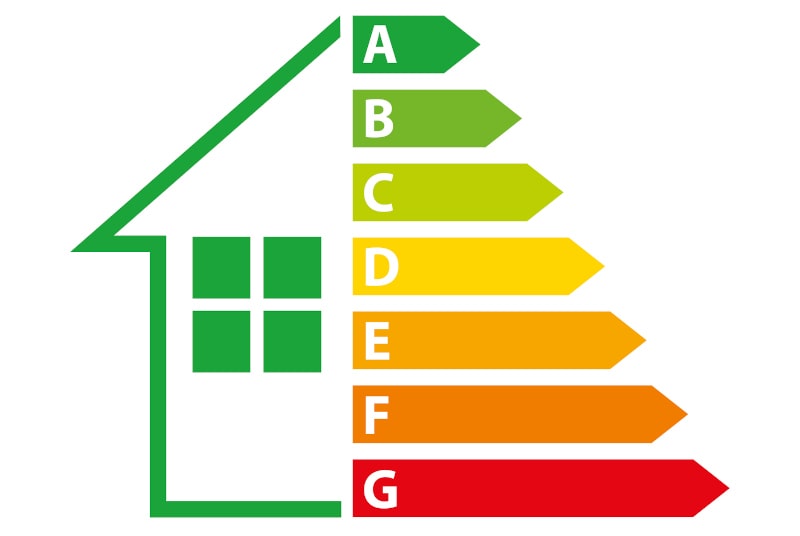
How does pricing compare between tilt and turn and casement windows?
Choosing windows isn’t just about function or style — budget plays a significant role. While both tilt-and-turn and casement windows deliver long-term value, their upfront and lifetime costs can vary significantly.
Base Costs
- Tilt and Turn : Typically priced 20–40% higher than casement models. This reflects the cost of more complex hardware and precision manufacturing.
- Casement : More affordable base price due to simpler mechanisms and mass availability.
Installation Costs
- Tilt and Turn : Installation often requires the expertise of experienced technicians due to the intricate locking and hinge systems.
- Casement : Easier and faster to install, which can reduce labour charges.
Long-Term ROI
- Tilt and Turn : Although it has a higher upfront cost, it offers better energy efficiency, security, and durability, which may lead to lower utility and maintenance bills.
- Casement : Lower initial spend, but may need earlier hardware replacements or seal repairs in extreme climates.
What’s the final verdict on tilt and turn vs. casement windows?
Each design offers unique advantages depending on the room, budget, and seasonal needs of your home.
Final Comparison Table
| Feature | Tilt and Turn | Casement |
|---|---|---|
| Functionality | Dual-mode (tilt + turn) | Outward swing only |
| Security | Multi-point internal locking | Crank lock, external hinges |
| Cleaning Access | Full interior access | Exterior access required |
| Energy Efficiency | Excellent (multi-seal + triple glaze) | Very good (with good seals) |
| Ease of Use | Slightly complex (2 handle positions) | Simple crank operation |
| Maintenance | Fewer exterior wear points | Hinges & cranks wear with exposure |
| Cost | Higher upfront, better ROI | Lower upfront, moderate maintenance |
| Aesthetic Fit | Modern, minimalist | Classic, versatile |
1000’s of Colours & Textured Finishes
Transform your home from ordinary to extraordinary with our new coloured and non-glare textured finishes. Available in a wide array of colours as well as custom matched colours for your very own personalized design.
Our Most Popular Replacement Window Colours:






